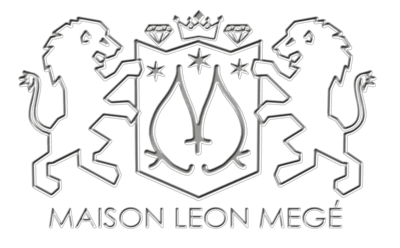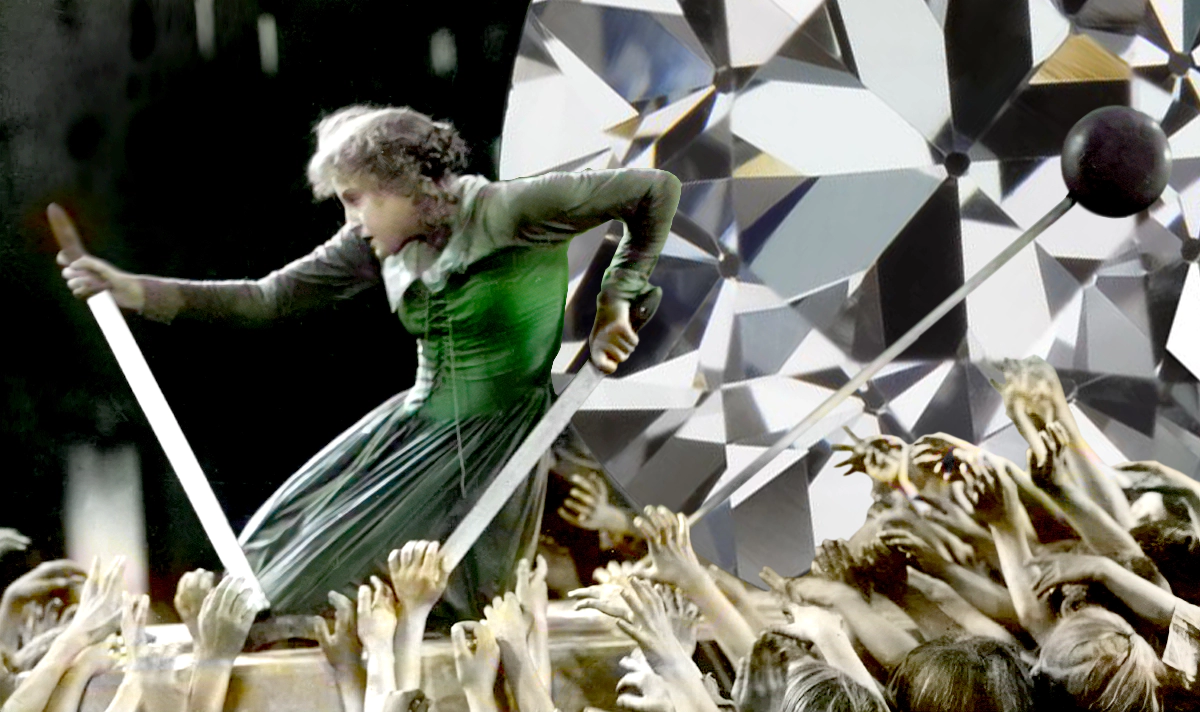
Modern diamonds offer the highest level of brilliance. But brilliance alone does not make a diamond beautiful. Plain-vanilla round brilliant is the most popular diamond cut but not because of its looks. Round is the easiest shape to standardize and work with. Modern diamond cuts are more expensive because the cutting process is more wasteful. A typical round brilliant weighs only half of the rough crystal it is cut from. The most efficient and atrocious-looking Princess cut fairs a little better, yielding about 60%.
Modern diamonds have superior scintillation, while antique cuts are best at producing dispersion. Antique cuts were designed to respond to candlelight with an explosion of fire.
Sparkle is a misnomer referring to a combination of diamond brilliance, dispersion, and scintillation. These properties depend on how the light is processed inside the stone and how it bounces back toward us. A diamond that sparkles” better excels at uniform light refraction and distribution. It has a strong contrast between areas of light reflection and absorption. It also depends on the proportion between the size of the facets and the stone’s size.
Round is the most expensive diamond cut. Choosing a fancy-shaped diamond can save you 20-30% versus a round diamond of the same size and quality.
Princess cuts and modern cushions offer the lowest per-carat price. The reason for the high yield is the way rough diamond crystal is shaped.
All one carat round diamonds have the approximately same size.
A serious deviation from standard proportion makes a round diamond look bad. Deep rounds called nailheads look dark and metallic. Shallow rounds are called “fisheyes,” the name speaks for itself. Unlike rounds, shallow fancy shapes can look surprisingly good when they are skillfully cut. Such stones are facing up big, sometimes twice as big as other stones of the same weight.
Fancy shaped diamonds that have a relatively shallow depth but do not look glassy beat a round diamond
Elongated ovals and pears tend to appear larger than a round diamond. However, the difference is superficial and should not be a deciding factor in stone selection.
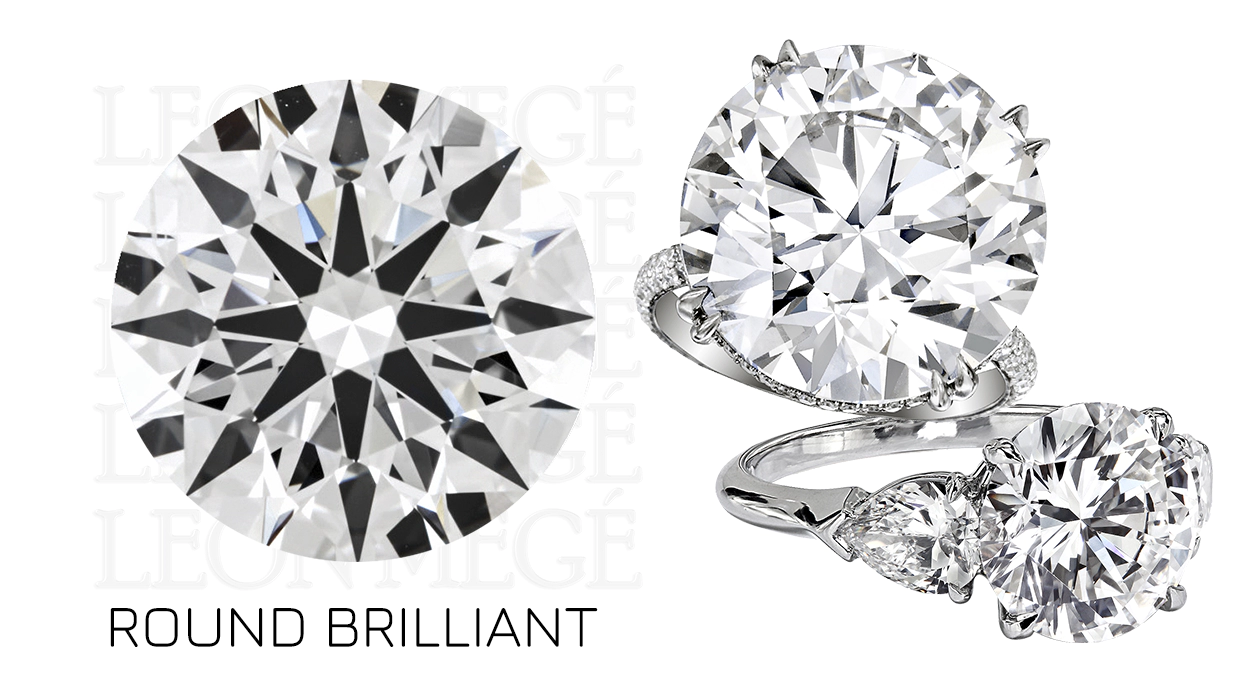
“Round” is a diamond’s shape, “brilliant” is a faceting style. Every round diamond has brilliant faceting, so round brilliant is the same as a round diamond. A round brilliant has 58 facets, 33 on the top and 25 on the bottom.
Round is not better or prettier than other diamond shapes.
DeBeers’ relentless advertising conditions us to associate the word “diamond” with the round shape.
Thanks to its eighth order of rotational symmetry, the round shape is best-suited for automated production, sorting, grading, standardization, and jewelry use. As a result, production speed takes priority over aesthetics.
In a world where diamonds became a commodity, the bestseller is always the one that appeals to the most people. The most versatile, non-engaging, and least imaginative is declared the winner to appeal to the average, esthetically challenged consumer. It is a vanilla ice cream of diamonds, bland and short on personality.
Round diamonds make up roughly 60 percent of all diamonds sold in the US. This percentage varies from state to state, for example, 73 percent in Maine vs. Louisiana’s 47 percent. It must be the weather.
Worldwide the percentage is even higher – roughly 75 percent.
For many decades Chinese and Russians living under Marxist regimes were deprived of fancy-shaped diamonds deemed to be an unnecessary luxury. Even today, they eye suspiciously any diamond that is not round.
An ideal depth percentage of a round diamond is roughly 59 to 62 percent.
Table size should ideally stay under 60 percent.
Pavilion angle is the most important metric and should be between 40 and 41 degrees. 46-48-degree angle typically gets a very high score on the Leon Mege index chart.<LINK>
The optimal crown angle is subject to personal taste. Typically 32-35 degrees is the sweet spot. The low angled crown contributes to the diamond’s marginally larger diameter. In terms of the look, we favor a steeper crown, as steep as 36 degrees.
These diamond proportions apply only to GIA-graded modern round diamonds, not other shapes or cuts.
Yes, OEC is a round brilliant. It has the same number of facets, but they are proportioned differently, resulting in a dramatically different look compared to a modern round brilliant.
Modern stones usually lack a facet on the diamond’s point called “culet,” common on Old European cut.
Like its brethren – the Antique cushion and the Asscher, OEC shows less brilliance but more dispersion or fire. It is not economically profitable to cut OEC stones today. Most of these stones come from vintage jewelry.
Round diamonds did not exist until the late 1800s. Then, one day an unknown barber in Amsterdam thought of applying the concept of a perfectly round head (every barber’s dream) to diamonds.
Using a lathe to produce a perfectly curricular diamond, he invented the “bruting machine.” But, unfortunately, the early machines caused fractures called “bearding” and bruises or “gletses” along the girdle. Faceted girdles appeared much later.
In the early 1900s, a rat race to invent the “perfect” diamond cut was fueled by the flood of South African diamonds into Europe.
The “Father” of a modern diamond cut was a Polish engineer Marcel Tolkowsky. He calculated the specifications of the new “American Standard” diamond cut. Using proprietary mathematical formulas that no one could neither understand nor repudiate, he claimed to find a perfect balance between diamond’s brilliance and fire.
The perfect diamond size for a round diamond is between 2.5 and 3 carats if you can afford it. This is the range when the size of its facets most optimal to a human eye.
Round cut diamonds have always been, and always will be, the plain vanilla ice cream of diamonds. Tastes good but lacking character. Round diamond size compensates well for its lack of personality.
However, a round diamond over five-carat starts losing its appeal. The bigger the round diamond gets, the more artificial it looks.

For centuries the classic cushion was the most common diamond cut, an equivalent of a present-day round brilliant. Its rising popularity in the early 90s ignited the cushion diamond cut revival that lasts until this day.
The modern surrogates of rare classic cushions flooded the market.
Modern cuts share antique stones’ pillow-shaped outlines, but their faceting is different.
The modern cushions are not quite as elegant as the classic cuts, but they are more brilliant and affordable.
There are three distinct types of cushion cuts. GIA classifies them into “Old Miners,” Cushion brilliants,” and “Cushion modified.”
Old miners have large “chunky” facets. The other two cuts have modern-style small facets. Cushion brilliants’ facets run all the way from girdle to culet, while modified cushions’ pavilion facets stop midway resulting in a nasty bulge. The bulge adds dead weight and can interfere with the ring’s design.
The original pillow-shaped classic cushion is called “old-miner.” It is usually referred to as an “antique cushion.”
Cushion brilliants are essentially modern round diamonds with a cushion outline. For an unknown reason, all shallow cushions are certified cushion brilliants, even those with antique faceting. A cushion brilliant is not a transitional cut between antique and modern cushions as often implied.
Modified cushions are cushioned-up radiants with rounded shoulders. Modified cushions are often affected by excessive brilliance resulting in a highly undesirable “crushed ice” look.
The majority of antique cushions sold today are new stones cut by a closely-knit family of diamond cutters in New York. On occasion, a few stones taken from old jewelry make their way into the market. However, those stones tend to have imperfect symmetry and outsized culets.
You can admire antique cushions in museum collections all over the world. Royal regalia, crowns, tiaras, necklaces are all encrusted with old miners.
High-end jewelers – Harry Winston, Graff, Leviev, Moussaieff, and others all favor the classic cushion diamond which is an antique cushion.
Antique cushions are in high demand. They do not have the dreaded “crushed ice” look typical of modern stones. Unfortunately, they are also scarce and more expensive to cut.
“Crushed ice” is the excessive brilliance without a contrast. Small facets and their arrangements are the reason behind the redundant reflections. Such stones essentially look like a piece of ice stepped on by someone. Most modified cushions have it; some cushion brilliants might have it as well.
Elongated modern cushions are essentially ovals with high shoulders. Like ovals, they can be afflicted with a bow tie, a darkened area in the middle of the stone.
You cannot go wrong with a cushion diamond set in a halo setting. A cushion cut works with all sorts of halos; smaller stones work particularly well with a double halo.
Radiant-derived modified cushions with bulging pavilions are ill-suited for solitaire or three-stone ring settings, especially those featuring pave on the basket. Modified cushions are hard to distinguish from a radiant cut when held in prongs that obscure the corners.
Cushion diamonds come in various length-to-width ratios, each suitable for a specific ring type. Cushion diamonds with a 1.5 and higher ratio are great candidates to be set East-West in a ring. Three- or five-stone rings tend to compensate for a long ratio visually stretching a stone sideways. The 1.2 to 1.4 ratio works well in a three-stone combination. Stones with a ratio less than 1.1 make excellent solitaire or a halo ring.
The ideal cushion is a myth, much like the Yeti or its North American cousin, the Sasquatch. The ideal cushion is the invention of disreputable dealers desperate to sell what should be considered an inferior product.
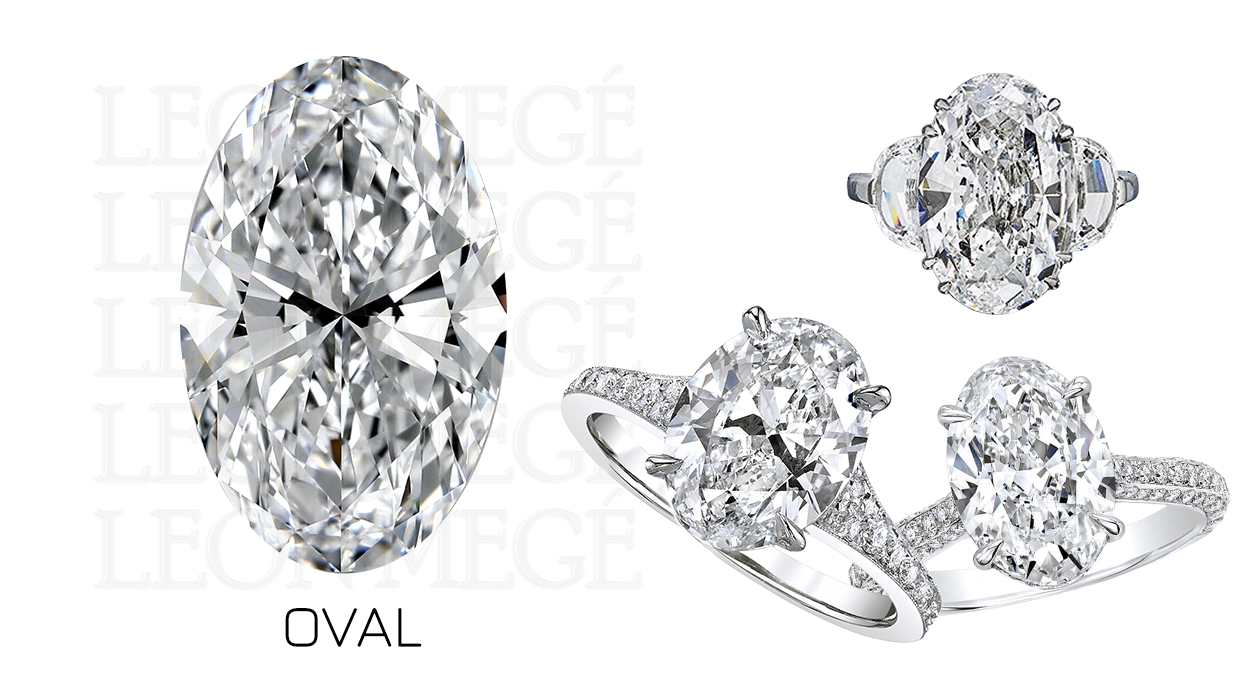
Oval’s elongated shape compliments the finger’s length while offering brilliance similar to a round stone. An oval diamond has a larger surface area than a cushion of the same carat weight because of the distribution of the material.
The best place to buy any diamond, including ovals, is directly from Leon Mege.
We have access to every oval diamond globally and guarantee the lowest price for any diamond you can find.
An oval diamond is an elliptical diamond with brilliant style facets. In terms of brilliance, an oval is very similar to a round cut. Oval diamonds tend to accentuate slender fingers and minimize the appearance of prominent knuckles.
In the late 1950s, a diamond merchant Lazare Kaplan pondered what to do with a pile of broken marquises. He decided to round off the tips and turn them into ovals, claiming the invention of something that already existed for centuries.
Oval diamonds were initially mistaken for poorly cut cushions and avoided. Today, it is considered one of the most beautiful diamond shapes.
The best choice for an oval diamond is a classic solitaire ring with four single prongs because the average oval diamond is 10% larger than the round cut.
A cathedral shank is the best option for an oval. It gives a ring the rigidity to withstand daily wear. The shank can be plain or pave set. Small ovals are used primarily as accent stones in necklaces and earrings. Ovals look spectacular accented with French-cut diamonds in legendary Leon Mege Mon Cheri ring style.
Wearing an oval isn’t just about the diamond. It’s about belonging to the exclusive club of the select few who dared. The oval shape signals one’s love for classic fashion and a heightened sense of individuality moderated by a devotion to tradition. It says you want to be different but not too much.
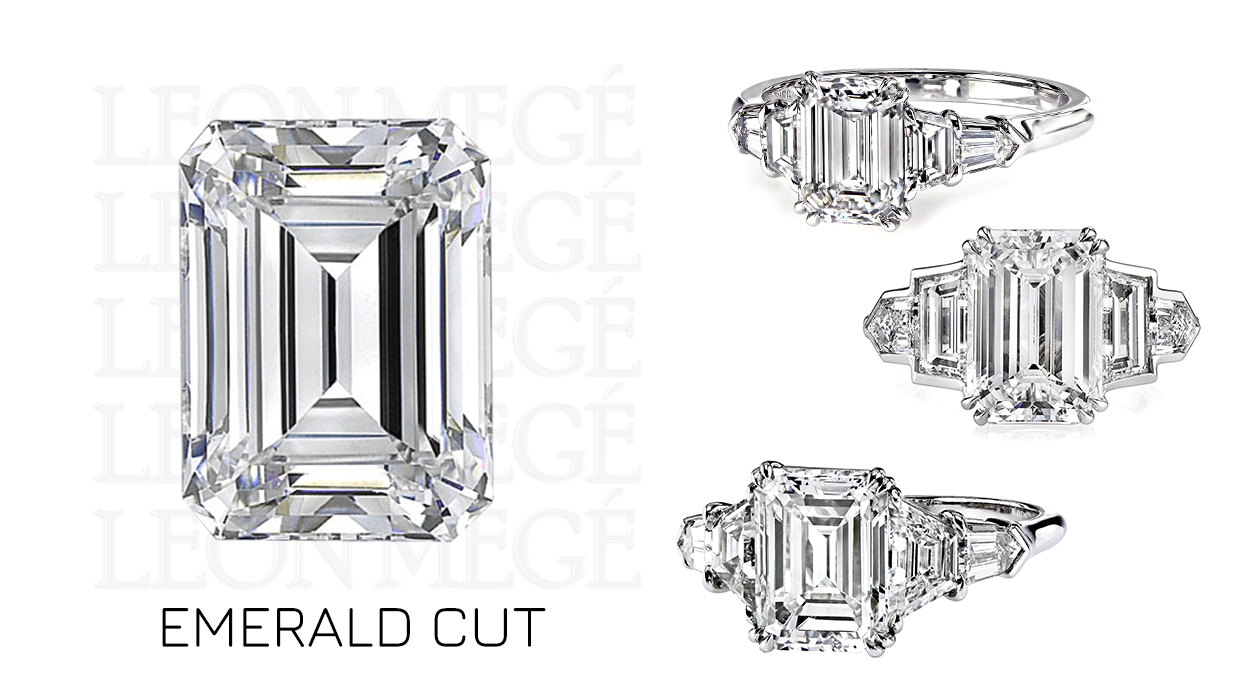
The emerald-cut diamond has a rectangular shape. Its straight linear facets are running parallel to its sides, and corners are truncated (clipped). A typical emerald-cut diamond has three rows of steps on both the crown and pavilion. There are 58 facets on a modern emerald cut.
Where the name “emerald cut” is coming from?
The cut is one of the oldest, its origins going back to the table cut of the 1500s. Before the 1500s, lapidaries were cutting green emerald gemstones using steps to reduce the pressure during the cutting process. In the 1920s, diamonds faceted in the same fashion (using parallel steps) became known as emerald cuts. The emerald cut diamonds exploded in popularity during the Art Deco era.
An emerald cut is known for its surprising affordability. As of March 2021, a natural three-carat emerald-cut diamond costs between $90,000 for the finest specimen and $30,000 for a decent commercial-grade stone. The price depends heavily on the number of stones available and other factors like cut or fluorescence.
An emerald cut is known for its intense fire, colorful rainbow flashes that illuminate a finely cut stone. It is one of the most elegant diamond cuts in the world.
An emerald cut’s length to width ratio is a matter of personal preference.
Emerald cuts in the 1.35 -1.4 ratio range seem to be the most common choice and work well with any engagement ring style.
Long emerald cuts of 1.5-2.0 are better suited for three- or five-stone rings.
A ratio of 1.40 to 1.50 is considered the most desirable. The longer and skinnier emeralds (1.5-1.65 ratio), and some prefer the shorter, squarer cuts (around 1.3)
The emerald-cut diamond is practical, versatile, upscale, and refined, excellent for classic and contemporary styles. Choosing an emerald-cut diamond announces to the world that you arrived and your sense of style is flawless.
It is loved by purists who love elegance, simplicity, and tradition all in one.
A good-looking emerald-cut diamond must have broad and prominent corners without chaotic reflections.
When facing up, emerald-cut diamonds are whiter compared to brilliant cuts. Emerald cuts higher than GIA K-color are entirely acceptable. Some actually prefer warmer colors for step-cut stones.
However, they are less efficient in hiding inclusions. The minimum clarity of VS1 is recommended.
Any shortcomings in emerald symmetry are clearly evident because of the geometry of step-cut facets. Any disruption in the pattern of straight parallel lines intersecting each other at predetermined angles is easily noticed even with an untrained eye. It is smart to look for a stone with a very good or, better yet, excellent symmetry.
Instead of a pointy culet, an emerald cut has a culet line called a “keel.” The keel line is recommended not to exceed the diamond width.
The keel’s length is vital because it determines the angle at which pavilion facets meet. A significant difference between the pavilion’s long and short side angles will result in a dark center.
The emerald cut is a perfect stone for a three-stone ring with trapezoids, bullets, or shields. However, the best-looking emerald cut ring ever is a five-stone ring with Balle Evassee diamonds. Balle Evassee is a combination of steep-angled traps and short bullet pentagons.
Shorter emeralds are perfect in solitaires and even surrounded by a very dainty micro pave halo.
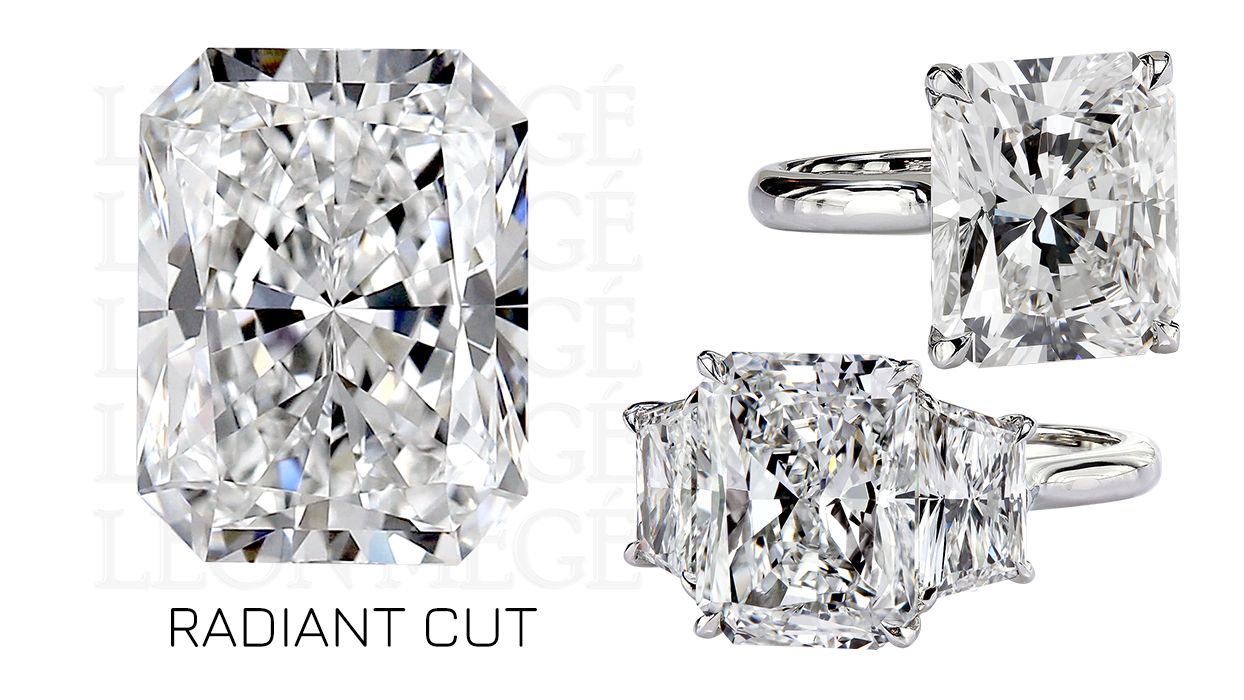
The radiant cut was developed with the goal of combining the round cut’s brilliance with an elegant shape of the emerald cut, with 70 facets giving it a remarkable ability to retain light and spit it back in a dizzy multitude of sparkles.
The radiant- and emerald cuts share the same outline – a rectangular shape with clipped corners. However, each has a distinct type of facet.
Both cuts look entirely different despite having identical shapes.
A radiant cut is a brilliant-cut with kite- and triangular-shaped facets radiating from the center. An emerald cut is a step cut; it has rectangular- or trapezoid-shaped facets running in parallel steps to each other.
An emerald-cut sophisticated look can be attributed to its intense fire bursting through its bold geometric facets. A Radiant cut trades fire for brilliance.
Radiant cut has the ability to improve the color intensity. Fancy diamond color has three components – the hue (primary color or a combination of two or more colors), tone (color’s relative lightness or darkness ), and saturation (the color strength).
Radiant cut has a dramatic effect on the fancy colored diamond’s tone and saturation.
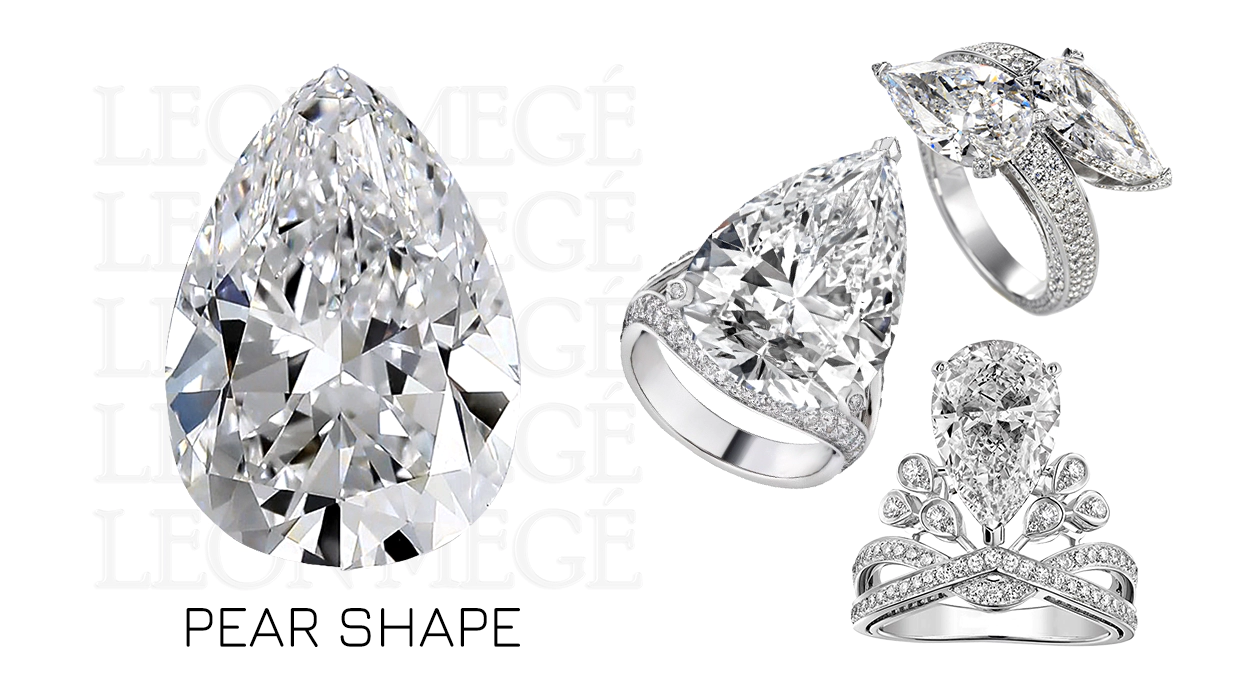
The pear shape is a unique diamond, a combination of a marquise on one end and an oval on the other. It combines the cuddly softness of a rounded outline with the dramatic exclamation of a pointy tip. Pear shapes are cheapest relative to rounds at one-carat size, but the difference in price decreases between pears and rounds as the size grows.
Properly proportioned pear-shaped diamonds are gorgeous and are in high demand for engagement rings. All elongated diamonds, such as a pear shape, tend to look larger than a round diamond. Pear is a less traditional choice of a diamond than, say, round or cushion. It is a unique cut and does not work for everyone. It’s a good idea to make sure that you will be enamored with it for many years to come.
The best ring style for a pear shape is a solitaire. The best side stones for a three-stone ring with a pear shape are baguettes and bullets. Half-moons are the absolute worst choice of side-stones for the pear shape. The pear-shaped halo is less popular. Elongated pear-shaped diamonds also look wonderful as drops in earrings and pendants.
A pear-shaped diamond is usually set with three or five prongs.
The pear’s tip is often set with a V-prong, though a claw prong on the tip is the better option. Sometimes, pears are set the old-fashioned way using two prongs on both sides of the tip. This destroys the elegance of the pear shape.
The point should face out toward the wearer’s fingertips instead of facing inward toward the wrist, mimicking fingernails. By pointing outwards, the pear shape makes the fingers appear slimmer.
Both shapes describe the same stone. A pear-shaped diamond has a rounded end on one side and a tapering point on the other. A teardrop is a very elongated pear shape with a length-to-width ratio that’s significantly over 1 to 1.5.
The most popular are elongated pears resembling the shape of natural curves of a sunflower seed. 1.5 to 1.7 length-to-width range is the most desired ratio. However, some people prefer much shorter ratios, especially for smaller diamonds.
Poorly cut pears can look crooked and have a bow tie. Pears with high or uneven shoulders decrease the diamond's appeal and should be avoided.
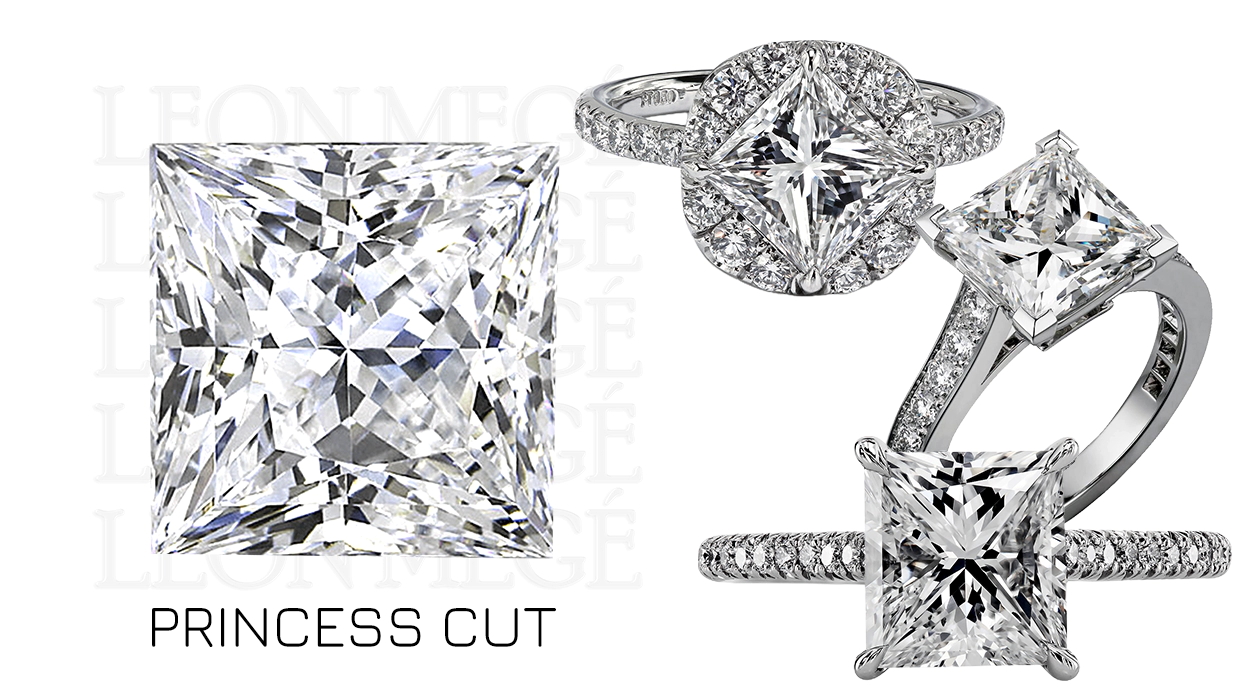
The princess cut is a modern, square, sometimes slightly rectangular, brilliant-cut stone with a large table, a low crown, and sharp corners. The princess cut has kite and triangular-shaped facets, just like a round brilliant but with all four sides cut completely straight. Princess cuts can have 58 or 80 facets since their number on the pavilion can vary.
The cut has a profusion of brilliance responsible for its jarring sparkle and shattered glass look.
The ideal length to width ratio of a princess cut is 1.00 to 1.05, 60% – 70% percent table and 65% – 75% percent depth. A lower depth and higher crown make a princess cut less appalling, albeit more expensive.
The princess is cut to maximize finished weight at beauty’s expense. As a result, most of them have wide tables, shallow crowns, and deep pavilions that conceal extra weight.
A princess cut’s pavilion facets are arranged in chevron-shaped rows. The number of rows ranges from 2 to 4. This is not unique to princess cuts; the Asscher cut also features a variable number of rows.
Ultimately, the difference in the number of rows has little effect on the look of the stone. Having more “chevrons” on the princess’s pavilion cannot improve its unfortunately revolting appearance.
The princess cut gained worldwide popularity thanks to its relatively low price and the tear-inducing blast of sparkle. As a result, the princess cut is the second most popular diamond in the world. In the US, it accounts for over 21% of all diamond sales.
Surprisingly, it’s not in New Jersey where princess cuts are most popular, but in Wyoming, with a 30% share. The princess cut is least popular in Washington, D.C., at only 11% of total sales. Commonly used in low-end jewelry, the princess cut is considered vulgar and unrefined for upscale pieces. As a result, most jewelry designers are apprehensive of using the princess cut, opting for Asschers, baguettes, and step-cut carre diamonds instead.
A popular and beautiful square brilliant – the French cut existed long before the princess cut took its place. The peak of French cut popularity was at the height of the Art Deco era. Unfortunately, it was expensive to produce as roughly a third of the diamond crystal was wasted during the cutting.
According to the market research, people clamored for a square diamond with a round cut’s brilliance. The answer was a “profile” cut that came into existence in 1961, when a London cutter Arpad Nagy sliced four sides of a round stone in an apparent fit of anger, turning it into a perfectly square brilliant with 58 facets.
In 1979, a group of Israeli cutters: Yigal Perlman, Betzalel Ambar, and Israel Itzkowitz created a similar-looking square brilliant-cut with fewer facets. Driven by the desire to create an affordable diamond cut, they gave it a shallow crown and deep pavilion. This innovation made it possible to produce two instead of one stone from a single piece of rough with very little waste.
The corners of a princess cut are extremely delicate and must be protected by prongs. The princess’ tips are prone to breaking even with regular wear. A broken tip cannot be repaired without the stone losing significant weight. It is recommended to exercise caution during daily wear or, better yet, to protect the stone by surrounding it with a halo.
Sharp corners are protected with prongs. V-prongs are marginally stronger than claw prongs but look too clumsy and metallic.
We recommend claw prongs on each of the four corners as the best way to set a princess cut. Those who say otherwise do not know what they are talking about and shall burn in a special section of hell reserved for bad jewelers.
Surprisingly, a princess cut looks natural in a bezel setting. Small princesses are often set in a channel.
It’s a good idea to protect the princess’s vulnerable corners with a halo. But, unfortunately, a square halo makes the princess cut even more revolting to look at.
So it’s ultimately best to set the princess cut in a plain classic or modern solitaire. The second best option is a three-stone ring with long tapered baguettes or a matching pair of smaller princess cut diamonds.
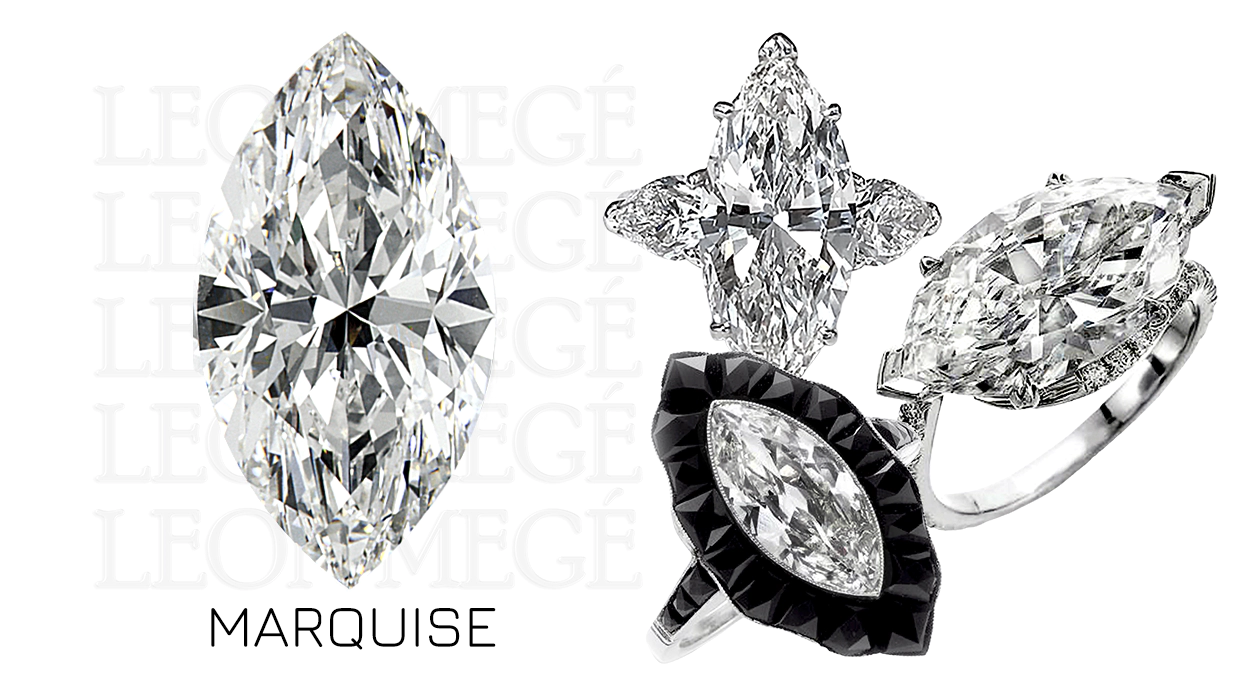
The marquise cut is an elongated elliptical shape with pointed ends. It generally has 56 – 58 facets, 33 on the crown and 25 on the pavilion.
There are several confusing terms for describing marquise’s parts.
The belly is the widest part of the stone; its wings are essentially what we call shoulders in ovals. Unlike an emerald cut where the keel is an elongated culet, marquise’s keel line is the edge running from point to point at the bottom of the stone. The tips are points where the two curved sides meet.
The French tip is a faceting arrangement on the stone’s end designed to improve the stone’s appearance and protect the point. The French tip is a premium feature of marquise, pear, and heart-shaped diamonds.
The marquise shape is very popular with gemstones like emeralds, rubies, and sapphires.
A beautiful slender diamond known as “navette” or “little boat” in French was renamed marquise in the 18th century because of French King Louis XIV’s indecent joke. He compared the alluring lips of his mistress, Marquise de  Pompadour, to the diamond’s shape. Thankfully, the “Sun King” didn’t get to match her other body parts to diamond shapes, or you wouldn’t want to be buying a round diamond today. So, in a sick twist, marquise diamonds became a badge of French nobility and were worn exclusively by those with a title of marquis or better.
Pompadour, to the diamond’s shape. Thankfully, the “Sun King” didn’t get to match her other body parts to diamond shapes, or you wouldn’t want to be buying a round diamond today. So, in a sick twist, marquise diamonds became a badge of French nobility and were worn exclusively by those with a title of marquis or better.
As Al Bundy put in his eloquent speech at Speakers Corner in London: “Am I alone in hating the French? No? I thought so.”
A bow-tie is a feature of any elongated diamond, including a marquise, that has a pointed culet. The effect is caused by the variable pavilion angle that goes from steep on the long sides to the shallow on the points.
The bow tie manifests itself as a darkened area across the center of the stone that is shaped like – you guessed it – a bow tie. The ghastly effect is mitigated by skillful faceting. However, a minor bow-tie is not detrimental to the marquise’s beauty.
All marquise diamonds have a bow tie, it’s just a matter of a degree. A weak bow tie even adds contrast and character to the stone.
A marquise is thought to have an oversized presence. Of all fancy cuts, it has the largest crown combined with a shallow pavilion. All shallow and pointed cuts, including marquises, pears, ovals, princesses, and hearts, face-up bigger than other stones.
A marquise with rounded tips is lovingly called “a moval,” a combination of two words, marquise and oval. They are typically antique stones featuring large elongated culets. Movals are very beautiful but extremely rare.
Navette is an old-fashioned name for a marquise diamond.
The optimal length-to-width ratio of a marquise cut is hovering around 1:2. The ideal depth is commonly quoted to be between 55% to 65%. However, deeper or shallower stones are lovely when skillfully cut. The size, position, and the number of facets are essential for a marquise’s beauty.
A marquise-cut diamond must be absolutely symmetrical. The marquise cut points should be perfectly aligned, and both sides should have a gentle arc without breaking point. Your jeweler should be able to calculate the ideal radius of the curvature with the simple formula κ= dT/dS where T is the tangent and S is the arc length, or by using the vector function
k= f ′′ (x)| / (1+ [ f ′ (x)]2)3/2
A marquise diamond’s pointed tips can snag and chip, so they should be protected by prongs.
The marquise cut is unique because it requires only two prongs to secure the stone safely. Except for very large stones, marquises are set with two prongs, one on each tip. Marquises can be set with V-prongs to emphasize their pointed tips and differentiate them from ovals.
Any diamond will compliment you, including the marquise, because you are beautiful.
Contrary to popular belief, fingers are not getting any longer if you are wearing a marquise.
The marquise cut, just like any other elongated shape, emphasizes naturally long fingers, drawing attention to their alien-like proportions. Small marquises actually make fingers look shorter.
Marquise diamonds look best when used as accent stones in clusters, often in combination with pear shapes and rounds. The leaf-like shape of marquises and pears makes them popular in stylized garlands and floral motifs.
Using marquises as the ring’s center stone makes sense only when the stone is fairly large. The best way to set a marquise diamond in a ring is as a solitaire with six prongs. In a three-stone ring, the center stone looks good flanked by skinny half-moons, bullets, and tapered baguettes.
Very long marquises set East-West across the finger are stunning.
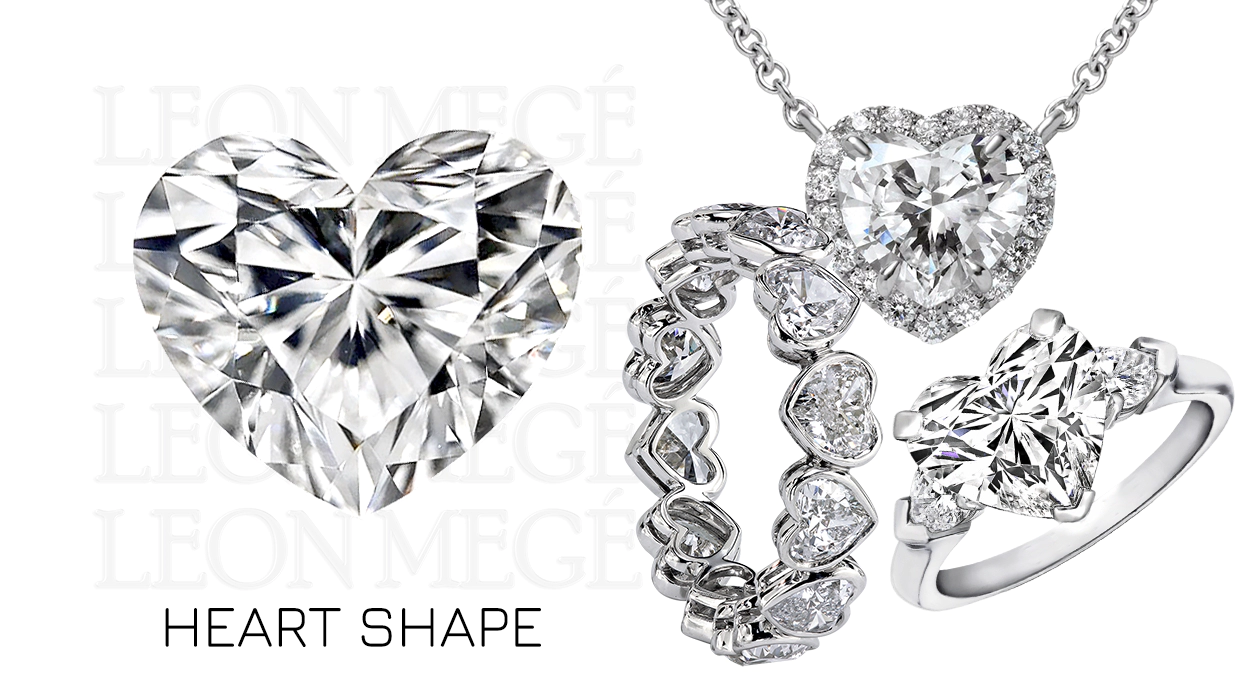
The heart-shaped diamond dates back to the late 1400s when this cut was considered a symbol of royalty. In a conversation with diplomat Nicodemo Tranchedini, Duke Galeazzo Maria Sforza compared the Medici dynasty to a heart-shaped diamond. Huh? The record keeper must have failed to mention the amount of alcohol consumed before he made that statement.
In 1562, Queen Elizabeth I received a heart-shaped diamond ring from her greatest rival, Mary Queen of Scots, in a gesture of peace and sisterly love. They spent the rest of the time plotting to kill each other.
French Cardinal de Richelieu, the Three Musketeers’ villain, owned a 20-carat heart-shaped diamond given to him as a bribe. In those days, men of power were not afraid to wear their hearts on their sleeves.
In 1972, Richard Burton gave Elizabeth Taylor a heart-shaped diamond with the words “Love Is Everlasting” scratched on its face in Parsi. The historic portrait diamond was set by Cartier into a pendant and bravely survived the slippery decolletage of the aging star into the 21st century.
The world’s most famous heart-shaped diamonds include a 30.82-carat fancy blue stone found around 1909 and initially owned by Cartier. It is called The Blue Heart. Another well-known diamond is the Heart of Eternity, a 27.64-carat Fancy Vivid Blue diamond unveiled by De Beers in 2000. The iconic 115.34-carat black Gruosi diamond is the fifth-largest faceted black diamond in the world.
Heart-shaped diamonds look best with a ratio of 1:1. Hearts outside of this ratio look stretched or squeezed. The heart shape has 56 to 58 facets typically, including 6 to 8 main pavilion facets. The table size is important since it has an impact on the overall brilliance and sparkle. The most desirable table is between 56 to 62 percent. The total depth should range between 56 to 66 percent.
The best heart-shaped diamonds have perfectly symmetrical lobes. The cleft (the inward-facing incision) must be crisp and smooth, with natural and even curvature. The pointed tip should divide the heart into two identical halves. A heart shape should be large enough to show off its shape as it can otherwise be mistaken for a pear cut.
The heart-shaped diamonds are usually set with three or five prongs. The tip is protected with a V-prong or a claw prong. Small hearts always have three prongs. We don’t recommend bezel settings. Diamond’s point should face towards the fingertips.
The heart-shaped diamond is the most romantic of all diamond cuts, so it’s a popular option for engagement rings and anniversary jewelry. Heart-shaped diamonds look best as solitaires and are also lovely when flanked by two smaller round brilliants. While this shape is considered tacky in the West, it’s very trendy in Asia.
The worldwide use of the heart symbol in art, cardiology, card decks, and silly Valentines turned it into one of the most popular non-geometric shapes, second only to the cross.
The heart was known as the vessel of love and the source of life since the time of the Pharaohs. The heart was the only organ to remain intact during mummification for use in rebirth.
The symbol representing the organ changed gradually over the course of history. Historians speculate that our symbol of love and affection evolved from depictions of buttocks, breasts, testicles, and even pubic mounds. Anything associated with reproduction is suspect, like the silphium seedpods used as a form of birth control in antiquity.
In Buddhism, the heart shape became the symbol of enlightenment rather than love. We want to think that our ancestors were inspired by something more cultivated than a set of reproductive organs, maybe a pair of swans bumping heads. After all, swans are monogamous.

